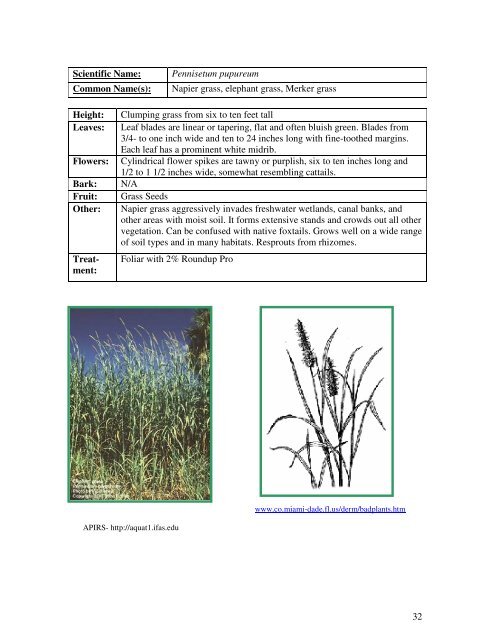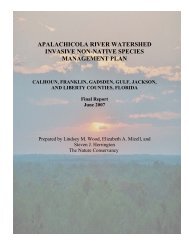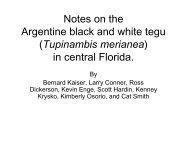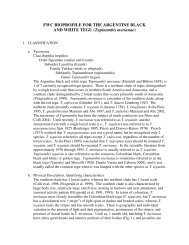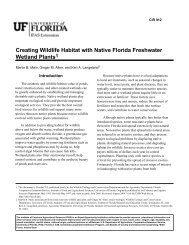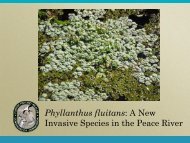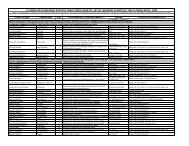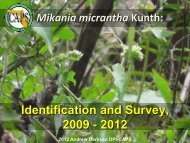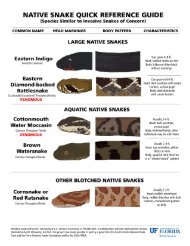Identification Guide For Invasive Exotic Plants of the Florida Keys
Identification Guide For Invasive Exotic Plants of the Florida Keys
Identification Guide For Invasive Exotic Plants of the Florida Keys
Create successful ePaper yourself
Turn your PDF publications into a flip-book with our unique Google optimized e-Paper software.
Scientific Name:<br />
Common Name(s):<br />
Pennisetum pupureum<br />
Napier grass, elephant grass, Merker grass<br />
Height:<br />
Leaves:<br />
Flowers:<br />
Bark:<br />
Fruit:<br />
O<strong>the</strong>r:<br />
Treatment:<br />
Clumping grass from six to ten feet tall<br />
Leaf blades are linear or tapering, flat and <strong>of</strong>ten bluish green. Blades from<br />
3/4- to one inch wide and ten to 24 inches long with fine-too<strong>the</strong>d margins.<br />
Each leaf has a prominent white midrib.<br />
Cylindrical flower spikes are tawny or purplish, six to ten inches long and<br />
1/2 to 1 1/2 inches wide, somewhat resembling cattails.<br />
N/A<br />
Grass Seeds<br />
Napier grass aggressively invades freshwater wetlands, canal banks, and<br />
o<strong>the</strong>r areas with moist soil. It forms extensive stands and crowds out all o<strong>the</strong>r<br />
vegetation. Can be confused with native foxtails. Grows well on a wide range<br />
<strong>of</strong> soil types and in many habitats. Resprouts from rhizomes.<br />
Foliar with 2% Roundup Pro<br />
www.co.miami-dade.fl.us/derm/badplants.htm<br />
APIRS- http://aquat1.ifas.edu<br />
32


